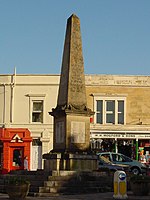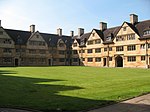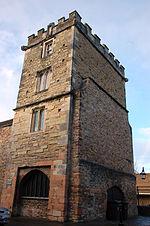Badminton School
1858 establishments in EnglandBoarding schools in BristolEducational institutions established in 1858Girls' schools in BristolGrade II listed buildings in Bristol ... and 6 more
Grade II listed educational buildingsMember schools of the Girls' Schools AssociationPeople educated at Badminton SchoolPrivate schools in BristolUse British English from October 2017Westbury-on-Trym

Badminton School is an independent, boarding and day school for girls aged 3 to 18 years situated in Westbury-on-Trym, Bristol, England. Named after Badminton House in Clifton, Bristol, where it was founded, the school has been located at its current site since 1924 and consistently performs well in the government's league tables, particularly at A-Level. In 2008 the school was ranked third in the Financial Times top 1,000 schools.According to the Good Schools Guide, "The secret of the school's success is in its size and a good deal of individual attention."
Excerpt from the Wikipedia article Badminton School (License: CC BY-SA 3.0, Authors, Images).Badminton School
Brecon Road, Bristol Henleaze
Geographical coordinates (GPS) Address Nearby Places Show on map
Geographical coordinates (GPS)
| Latitude | Longitude |
|---|---|
| N 51.48557 ° | E -2.617705 ° |
Address
Brecon Road
BS9 3AS Bristol, Henleaze
England, United Kingdom
Open on Google Maps









